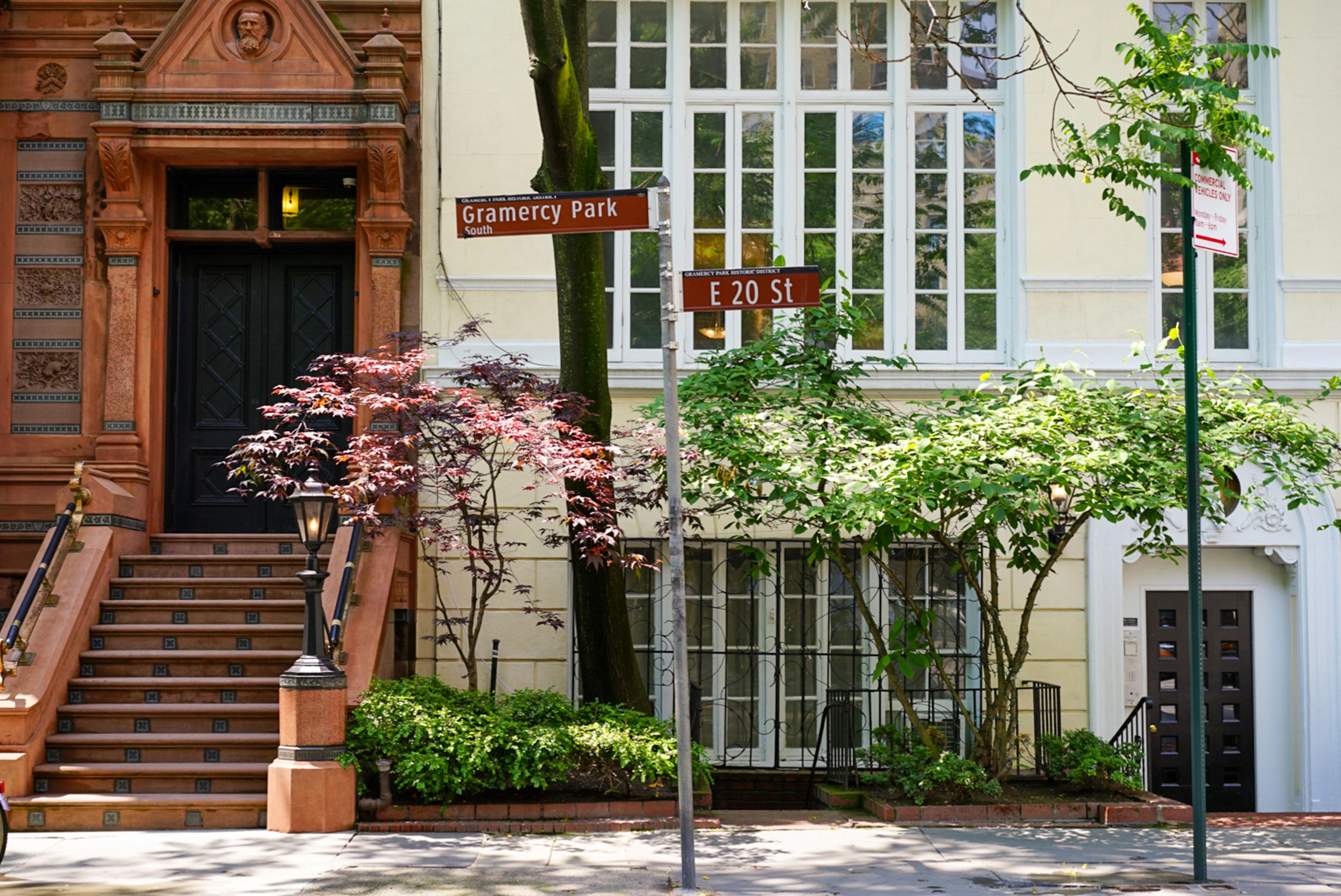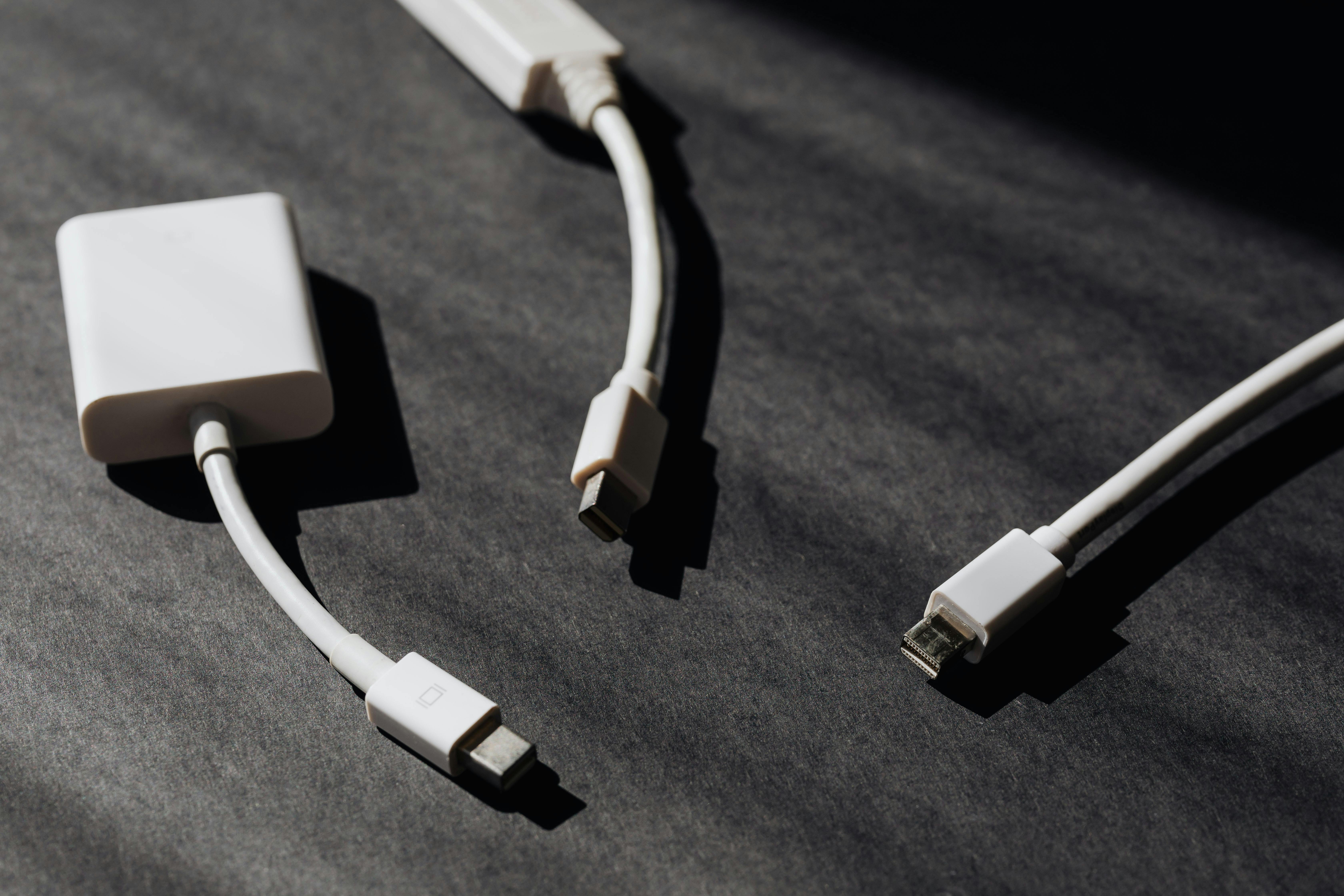Are you struggling with slow internet speeds on your Windows 11 device? You might be facing an issue with WiFi channel overlap! In this article, we will delve into how to fix Windows 11 WiFi channel overlap to ensure you enjoy faster internet speed and a smoother online experience. With more devices connected to the internet than ever, understanding your WiFi channel settings is essential for optimizing your connection. But what exactly is WiFi channel overlap, and how does it affect your browsing speed?
WiFi channels are like lanes on a highway. When too many cars (or in this case, networks) are trying to use the same lane, traffic jams happen—which means slower internet. In Windows 11, improper channel settings can lead to interference from neighboring networks, causing frustrating lags and buffering. But don’t worry! Fixing this problem is easier than you might think. By adjusting your WiFi channel settings, you can significantly enhance your connection speed and stability.
In the sections that follow, we’ll guide you through the steps to identify and rectify WiFi channel overlap issues on your Windows 11 system. Whether you’re a tech novice or a seasoned expert, our easy-to-follow instructions will help you regain control over your network. So, are you ready to unleash the full potential of your internet connection? Let’s dive in and transform your browsing experience from sluggish to speedy!
Uncover the Secrets: How to Identify and Fix WiFi Channel Overlap in Windows 11 for Blazing Fast Speeds

In the digital age, having a reliable WiFi connection is a must for everyday tasks, like streaming, gaming, or working from home. One common issue that can really slow down your internet speed is WiFi channel overlap, especially if you using Windows 11. Many people don’t even know that their WiFi might be affected by this. So, let’s uncover the secrets: how to identify and fix WiFi channel overlap in Windows 11 for blazing fast speeds.
Understanding WiFi Channels
WiFi signals operate on specific channels, and these channels can overlap with other nearby networks. In the 2.4 GHz frequency band, channels 1, 6, and 11 are the most commonly used channels that don’t overlap. However, if your neighbors are using the same channels, it can create interference, slowing down your connection. The 5 GHz band has more channels and less overlap, but still, it can be crowded. Identifying the right channel for your network is key for optimal performance.
Identifying Channel Overlap in Windows 11
To see if you have a channel overlap, you can use built-in tools in Windows 11. Follow these steps:
- Open Command Prompt: Search for “cmd” in the start menu and select it.
- Type the following command:
netsh wlan show alland hit Enter. - Look for your WiFi network: This will show you details about your network, including the channel it’s operating on.
You will be able to see other networks and their channels too. If you notice that many networks are on the same channel as yours, then you probably got a channel overlap problem.
Fixing WiFi Channel Overlap
Now that you identified channel overlap, it’s time to fix it. Here’s how you can do that:
- Access Your Router Settings: Open a web browser and type in your router’s IP address (usually 192.168.1.1 or 192.168.0.1).
- Log In: Use the admin credentials. If you haven’t changed them, check your router’s manual.
- Find Wireless Settings: Look for a section that says “Wireless” or “WiFi Settings.”
- Change the Channel: Select a channel that is less crowded. For 2.4 GHz, channels 1, 6, or 11 are best. For 5 GHz, try channels that aren’t in use by nearby networks.
- Save and Reboot: After making changes, save the settings and reboot your router.
Tips for Faster Internet Speed
- Position Your Router Properly: Place your router in a central location in your home for better coverage.
- Limit Interference: Keep the router away from walls and other electronics like microwaves.
- Update Your Router Firmware: Check if there are any available updates for your router’s firmware. Keeping it updated ensures better performance and security.
Tools for Monitoring WiFi Performance
If you want to take it a step further, you can download third-party applications to monitor your WiFi network. Some popular tools include:
- NetSpot: Great for detailed analysis of WiFi networks.
- inSSIDer: Helps you find the best channel for your WiFi network.
- Acrylic WiFi: Provides insights into channel usage and network performance.
By regularly monitoring your WiFi settings and understanding how channel overlap affects your speed, you can enjoy a much smoother internet experience. Fixing Windows 11 WiFi channel overlap isn’t just about tweaking settings; it’s about understanding your network environment.
With a little effort, you can dramatically improve your WiFi performance and ensure that your internet speed remains fast and reliable. So go ahead, put these tips into practice, and enjoy a seamless online experience.
5 Proven Steps to Optimize Your Windows 11 WiFi Settings: Eliminate Channel Overlap Today!

Are you tired of slow internet speeds on your Windows 11 device? One major culprit could be channel overlap in your WiFi settings. Channel overlap happens when multiple WiFi networks in your area use the same channels, leading to interference and reduced speed. Luckily, optimizing your WiFi settings in Windows 11 is easier than you might think! Here are 5 proven steps to fix Windows 11 WiFi channel overlap for faster internet speed.
1. Check Current WiFi Channel Usage
First, you gotta find out which channels are being used nearby. For this, tools like WiFi Analyzer can be super useful. Download it from the Microsoft Store, and run it to see the channels in use. Look for crowded channels, especially in the 2.4 GHz band. If your network is on a busy channel, it’s time to make a change.
2. Change the WiFi Channel in Your Router Settings
Once you identify the channels, log into your router settings. Usually, you can access it by typing the router’s IP address into your browser. This is often 192.168.1.1 or 192.168.0.1. After logging in, look for the wireless settings section. You may find options like “Channel” or “Channel Width.”
- For 2.4 GHz networks: Choose channels 1, 6, or 11 as they don’t overlap.
- For 5 GHz networks: There are more non-overlapping channels, so pick one that’s less populated.
Make sure to save your changes and restart your router.
3. Optimize Windows 11 Network Settings
Next, you need to tweak Windows 11 settings. Sometimes the default configurations aren’t the best for your setup. Go to the Settings app, then navigate to Network & Internet > Status. Click on “Hardware properties” under your network. Here, you can adjust settings like:
- Network Band: Ensure you are connected to the right band, either 2.4 GHz or 5 GHz.
- Network Profile: Set it to “Private” for better sharing and discovery.
These small adjustments can go a long way.
4. Update Network Adapter Drivers
Outdated drivers can also cause slow connections. To check for updates, go to Device Manager by right-clicking the Start button. Find “Network adapters,” right-click your WiFi adapter, and select “Update driver.” Choose “Search automatically for drivers.” If there’s an update available, install it. This can help fix issues related to channel overlap.
5. Use Quality of Service (QoS) Settings
Lastly, enabling QoS can help prioritize your WiFi traffic. This means important applications will get more bandwidth. To enable QoS, go back to your router settings. Look for QoS settings, which may be under Advanced settings. Here, you can specify which devices or applications should have priority.
- Examples of prioritized devices:
- Gaming consoles
- Streaming devices
- Computers used for work or video calls
This helps to ensure that even when multiple devices are connected, the most important ones still work smoothly.
By following these steps, you can effectively eliminate channel overlap and enhance your Windows 11 WiFi performance. Remember, sometimes it may take a bit of trial and error to find the best settings for your specific environment. But once you do, you’ll notice a significant improvement in your internet speed. Don’t let slow WiFi hold you back anymore; take control of your connection today!
The Ultimate Guide to Resolving WiFi Channel Interference in Windows 11: Achieve Peak Performance

In today’s world, a reliable and fast WiFi connection is crucial for both work and play. But, if you are struggling with slow internet speeds and frequent disconnections, you might be facing WiFi channel interference. Windows 11, like its predecessors, can experience this issue, which can be frustrating. This guide will help you identify how to resolve WiFi channel overlap and improve your internet speed.
Understanding WiFi Channels and Interference
WiFi networks operates on different channels that allow multiple networks to share the same radio frequency. In the 2.4 GHz band, there are 11 channels in the US, but only three (1, 6, and 11) do not overlap. When two networks use overlapping channels, it can cause interference, leading to slower speeds and connectivity issues. In contrast, the 5 GHz band provides more channels, which reduces interference but has a shorter range.
Signs of WiFi Channel Interference
You might be wondering if you’re experiencing channel interference. Here are some common signs:
- Slow internet speeds.
- Frequent disconnections from the network.
- Difficulty in connecting new devices.
- Inconsistent WiFi performance in different areas of your home or office.
How to Identify WiFi Channel Overlap in Windows 11
To fix Windows 11 WiFi channel overlap, first you need to identify the current channels in use. You can use tools like WiFi Analyzer or inSSIDer to see which channels are being used by nearby networks. Here’s how you can do it:
- Download a WiFi analysis tool.
- Run the tool and scan for available networks.
- Take note of the channels being used by your network and others.
Fixing WiFi Channel Overlap
Once you’ve identified the channels, it’s time to resolve the interference issues. Here’s a step-by-step approach to achieve peak performance:
-
Change the WiFi Channel:
- Open your router settings by entering your router’s IP address in a web browser.
- Log in with your admin credentials.
- Navigate to the wireless settings section and look for the channel option.
- Select a channel that is less crowded (preferably 1, 6, or 11 for 2.4 GHz).
- Save and restart your router.
-
Use 5 GHz Band:
- If your router supports dual-band, switch to the 5 GHz frequency. This band generally has less interference and more available channels.
- Ensure your devices also support 5 GHz.
-
Adjust Router Placement:
- Place your router in a central location, away from walls and obstructions.
- Elevate the router to improve coverage.
-
Limit Interference from Other Devices:
- Keep the router away from microwaves, cordless phones, and other electronics that can cause interference.
Regular Maintenance
To maintain a fast and reliable WiFi connection, it’s important to regularly check your network settings. Schedule periodic scans for channel usage and make adjustments as necessary.
Summary of Solutions
- Change your WiFi channel to a less crowded one.
- Utilize the 5 GHz band for better performance.
- Position your router strategically.
- Minimize interference from other electronic devices.
By following these steps, you can effectively resolve WiFi channel interference in Windows 11. This will not only enhance your internet speed but also provide a more stable connection for all your online activities. Never underestimate the power of a well-configured WiFi network!
Why Your Windows 11 Internet is Slow: Discover the Impact of WiFi Channel Overlap and How to Fix It

In today’s digital world, slow internet on your Windows 11 computer can be a frustrating experience. Many users in New York, and beyond, find themselves dealing with sluggish speeds, leaving them wondering what could be the cause. One common issue that often goes unnoticed is WiFi channel overlap. If you’ve ever felt like your internet was crawling, or if it’s worse during peak hours, it’s time to understand how WiFi channels impact your connectivity.
What is WiFi Channel Overlap?
WiFi signals operate on specific channels. Think of these channels as lanes on a highway. If too many cars (or signals, in this case) try to use the same lane, traffic gets congested. In WiFi terms, this congestion leads to slower internet speeds. Channels can overlap, especially on the 2.4 GHz frequency, which is commonly used. Here’s a quick breakdown:
- 2.4 GHz Band: Has 11 channels in the U.S., but only three of them (1, 6, and 11) do not overlap.
- 5 GHz Band: Offers more channels and less interference, but range can be limited.
Understanding this can help you make adjustments that could improve your speeds.
Signs of WiFi Channel Overlap
How do you know if you’re dealing with channel overlap? Here’s a list of signs that might indicate this issue:
- Frequent buffering while streaming videos.
- Slow loading times on websites.
- Disconnections from your WiFi network.
- Multiple devices experiencing slow speeds simultaneously.
If you’re experiencing one or more of these, it might be time to look into fixing your WiFi channel overlap.
How to Fix Windows 11 WiFi Channel Overlap for Faster Internet Speed
Fixing this issue is often simpler than it sounds. Here are some steps you can take to address WiFi channel overlap:
-
Identify Your Current Channel:
- Use a WiFi analyzer tool to see which channel your network is using, and what channels are being used by your neighbors.
-
Change Your Router’s Channel:
- Access your router settings by typing its IP address into your web browser.
- Look for the “Wireless Settings” section.
- Change the channel to 1, 6, or 11 for the 2.4 GHz band.
-
Utilize the 5 GHz Band:
- If your router supports it, try connecting to the 5 GHz band, which has more channels and less overlap.
-
Update Router Firmware:
- Ensure your router’s firmware is up to date. Manufacturers often release updates that can improve performance.
-
Relocate Your Router:
- Sometimes, simply moving your router to a more central location can help reduce interference and improve your WiFi signal.
-
Limit Interference:
- Keep your router away from other electronic devices that can cause interference, like microwaves or cordless phones.
-
Consider Upgrading Your Router:
- If you find that your router is old, it may be time for an upgrade. Newer models come with better technology to handle multiple devices.
Additional Tips for Improved Internet Speed
- Reboot Your Router Regularly: A simple reboot can clear out temporary issues.
- Use Ethernet for Critical Devices: Wired connections are faster and more stable.
- Limit Background Applications: Ensure that no unnecessary applications are using bandwidth in the background.
Addressing WiFi channel overlap could significantly enhance your internet experience on Windows 11. With just a few adjustments, you can potentially transform slow speeds into a smoother, faster browsing experience. Don’t let WiFi issues hold you back from enjoying everything the internet has to offer.
Boost Your Internet Speed by 50%: Simple Fixes for Windows 11 WiFi Channel Overlap Issues

In today’s digital age, a reliable and speedy internet connection is essential for almost everything we do online. Whether you’re streaming movies, playing video games, or working from home, slow internet can be a real headache. Many users might not realize that their Windows 11 device could be facing issues with WiFi channel overlap, which can slow down connection speeds significantly. If you want to boost your internet speed by 50%, fixing these channel overlap issues is crucial.
Understanding WiFi Channel Overlap
WiFi routers operate on specific channels within the frequency bands. In the 2.4 GHz band, there are only three non-overlapping channels: 1, 6, and 11. If you live in a densely populated area, like New York City, it’s possible that many routers are using the same channels, leading to interference. This interference can cause your internet speed to drop, making it frustrating to use your devices.
Identifying Channel Overlap
To determine if you have a channel overlap issue, you can use various tools, both free and paid. Here is a simple list of tools you can use:
- WiFi Analyzer: This application is available for Windows and helps you visualize the channels in use.
- NetSpot: A more advanced option that provides detailed information about your WiFi environment.
- inSSIDer: This tool not only shows channel usage but also helps identify the best channel for your router.
Once you’ve installed one of these tools, you can check which channels are being used by your neighbors. If you notice that many routers are sharing the same channel, it’s time to take action.
Fixing Windows 11 WiFi Channel Overlap
So you’ve identified a channel overlap problem. Here’s how you can fix it:
-
Access Your Router Settings: Type your router’s IP address in a web browser to access its settings. This address is usually something like 192.168.1.1 or 192.168.0.1.
-
Find Wireless Settings: Look for a section labeled “Wireless” or “WiFi Settings.”
-
Change the Channel: Select a channel that is less crowded. If most routers are on channels 1 and 6, try channel 11.
-
Save Changes: After changing the channel, save your settings and restart the router.
-
Test Your Connection: Once the router is back online, run a speed test to see if your internet speed has improved.
Additional Tips for Better WiFi Performance
In addition to fixing channel overlap, here are some more tips to enhance your internet speed:
- Position Your Router Wisely: Place it in a central location, away from walls and obstructions.
- Reduce Interference: Keep your router away from devices like microwaves and cordless phones.
- Update Your Router’s Firmware: Manufacturers often release updates that can improve performance.
- Secure Your Network: Ensure your WiFi is password-protected to prevent unauthorized access.
Conclusion
Fixing the WiFi channel overlap in Windows 11 can significantly improve your internet speed. By following these simple steps, users can expect to see a noticeable difference in their online activities. Don’t let slow internet hinder your productivity or entertainment. With just a few tweaks, you can enjoy a faster and more reliable connection, making your online experience much more enjoyable. So go ahead, make those changes, and take control of your WiFi speed today!
Conclusion
In conclusion, addressing WiFi channel overlap in Windows 11 is essential for optimizing your network’s performance and ensuring a stable internet connection. We explored the importance of selecting the right WiFi channels, the impact of overlapping networks, and how to utilize tools like the WiFi Analyzer to assess your environment. Additionally, we discussed the steps to change your WiFi channel through your router settings and the benefits of using dual-band routers to minimize interference. By following these recommendations, you can significantly improve your WiFi speed and reliability. Don’t let channel overlap hinder your online experience; take action today to configure your network settings for optimal performance. Regularly monitoring your WiFi environment and adjusting settings as needed will help you maintain a seamless and efficient internet connection. Empower yourself with the knowledge to enhance your digital experience in Windows 11!

